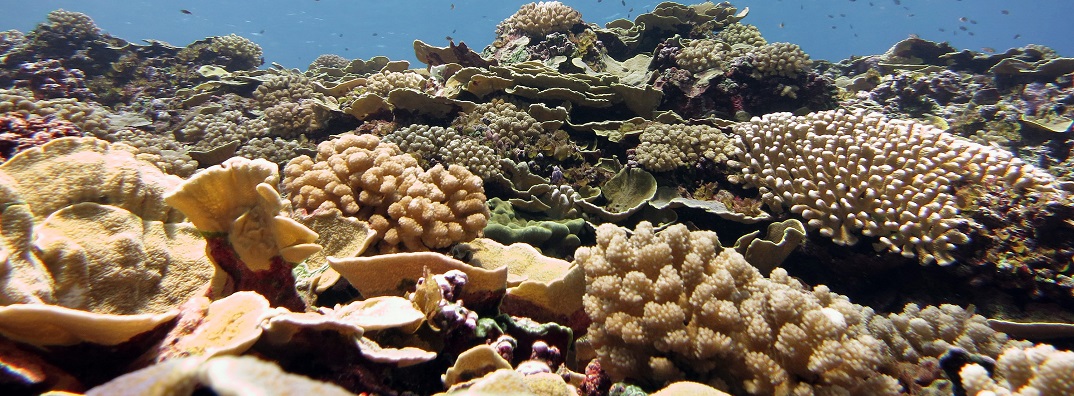- ABOUT US
- PROGRAM AREAS
- CONSERVATION APPROACH
- EDUCATION
- MULTIMEDIA
- Coral reef ecosystems in both the United States Pacific and Atlantic ocean jurisdictions have a “Fair” score, but are vulnerable and declining.
- Coral reefs near more dense human populations are degraded, which is likely due to land-based sources of pollution, impacts from fishing, temperature stress from global warming, more acidic water conditions, and for Florida and the wider Caribbean, a coral disease epidemic.
- Climate change impacts all coral reefs, regardless of location and proximity to human populations.
U.S. Coral Reefs are in Fair Condition but Vulnerable and Declining

The NOAA Coral Reef Conservation Program released a national status report for coral reefs in the United States, including coral ecosystems in American Samoa, the Commonwealth of the Northern Mariana Islands, Florida, Flower Garden Banks, Guam, Hawaii and the Northwest Hawaiian Islands, the Pacific Remote Islands, Puerto Rico, and the U.S. Virgin Islands.
The status report provides an overall snapshot from 2012-2018 of coral reef ecosystem conditions based on four indicators: corals and algae, fish, climate, and human connections.
Highlights of the status report include:
Coral reefs have biodiversity comparable to tropical rainforests, and they are among the most culturally significant and economically valuable ecosystems on Earth. In the United States, coral reefs provide billions of dollars in food, jobs, recreation and tourism, and coastal protection. A U.S. Geological Survey study determined that coral reefs annually provide flood protection to over 18,000 Americans and $1.8 billion worth of coastal infrastructure. However, they face an increasing number of threats from pollution, fishing impacts, climate change and ocean acidification, and more.
The status reports were developed by the National Coral Reef Monitoring Program, an integrated and focused monitoring effort with partners across the United States. They reflect data collected from 2012 to 2018. These reports join status reports released in December 2018 for the Pacific jurisdictions and in May 2020 for the Atlantic, Caribbean, and Gulf of Mexico jurisdictions.
View the cover letter, status report, and methodology report here.
Related Stories and Products
About Us

The NOAA Coral Reef Conservation Program was established in 2000 by the Coral Reef Conservation Act. Headquartered in Silver Spring, Maryland, the program is part of NOAA's Office for Coastal Management.

The Coral Reef Information System (CoRIS) is the program's information portal that provides access to NOAA coral reef data and products.
Work With US
U.S. Coral Reef Task Force
Funding Opportunities
Employment
Fellowship Program
Contracting Assistance
Graphic Identifier
Featured Stories Archive

Access the archive of featured stories here...
Feedback
Thank you for visiting NOAA’s Coral Reef Conservation Program online. Please take our website satisfaction survey. We welcome your ideas, comments, and feedback. Questions? Email coralreef@noaa.gov.
Stay Connected
Contact Us
NOAA’s Coral Reef Conservation Program
SSMC4, 10th Floor
1305 East West Highway
Silver Spring, MD 20910
coralreef@noaa.gov
